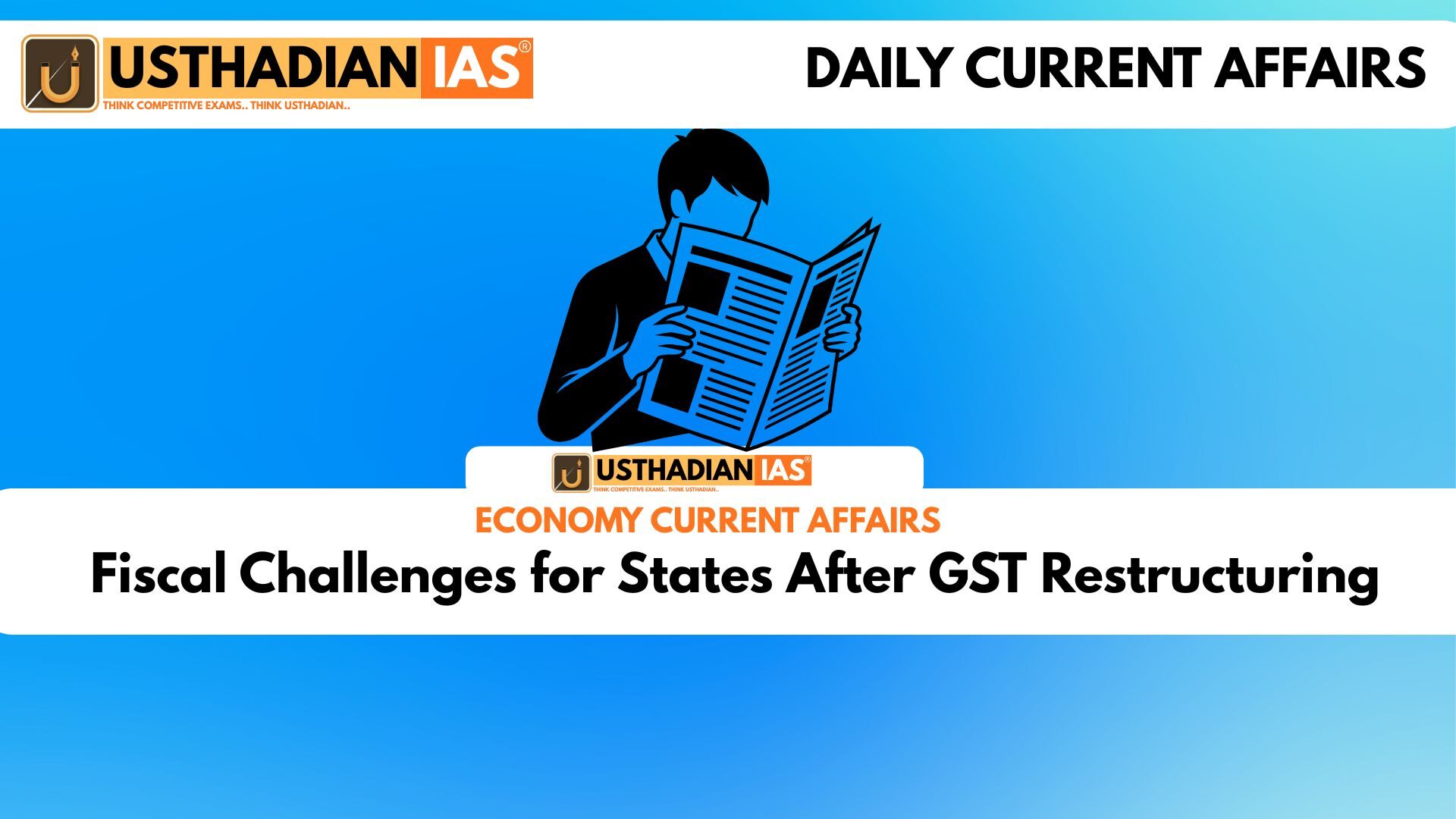End of Compensation Cess
Fiscal Challenges for States After GST Restructuring: The recent restructuring of Goods and Services Tax (GST) has led to the abolition of the GST Compensation Cess, raising major concerns over the fiscal health of states. This cess was originally introduced to compensate states for any revenue loss following the rollout of GST in July 2017. With its removal, states now face increased pressure to generate their own revenues.
Static GK fact: The GST (Compensation to States) Act, 2017 mandated compensation for five years, ending on June 30, 2022, later extended due to the pandemic.
Declining Fiscal Autonomy of States
The GST framework significantly altered India’s fiscal federal structure. Earlier, states had the authority to levy taxes such as VAT, Octroi, and Entry Tax. Post-GST, the power to decide tax rates and exemptions largely shifted to the GST Council, where the Centre holds decisive influence.
This transition has resulted in the erosion of fiscal autonomy. States that shoulder key developmental responsibilities in health, education, and law & order now depend on limited fiscal leeway, widening the expenditure-revenue mismatch.
Static GK Tip: The GST Council is chaired by the Union Finance Minister, with state finance ministers as members, but decisions require a three-fourths majority, giving the Centre an upper hand.
Revenue and Devolution Concerns
The share of tax devolution to states as a percentage of Gross Tax Revenue has been falling. This is due to the Centre’s growing reliance on cesses and surcharges, which are non-shareable under Article 270 of the Constitution. Consequently, many states complain that this practice restricts their fiscal flexibility.
Additionally, the Finance Commission’s formula for revenue sharing has been criticised for penalising performing states, as factors like population growth and fiscal discipline are weighed differently.
Static GK fact: The 15th Finance Commission (2021–26) recommended that 41% of the Centre’s divisible tax pool be devolved to states.
Dependence on Central Transfers
Currently, 44% of states’ total revenue comes from central transfers, with states like Bihar depending on them for up to 72% of their income. Such dependence can hinder liquidity management and occasionally leads to political tensions, especially in Opposition-ruled states.
The Way Forward
Experts suggest a restructured tax-sharing mechanism to promote cooperative federalism. Sharing the Personal Income Tax base between the Centre and states could enhance state revenues.
Some economists propose adopting the Canadian model, where sub-national governments collect 54% of total tax revenue and undertake 60% of total expenditure, ensuring balanced fiscal power.
Additionally, regular monitoring through a Fiscal Health Index can help states evaluate and strengthen their financial resilience.
Static GK Tip: Canada follows a federal fiscal model where both levels of government have constitutionally defined taxation powers, ensuring balanced revenue distribution.
Static Usthadian Current Affairs Table
Fiscal Challenges for States After GST Restructuring:
| Topic | Detail |
| GST Restructuring | Abolition of GST Compensation Cess in 2025 |
| Compensation Act | Enacted in 2017 for five years; extended post-pandemic |
| GST Council | Headed by Union Finance Minister; Centre has decisive role |
| Finance Commission Share | 41% tax devolution recommended for 2021–26 period |
| Fiscal Dependence | States receive 44% revenue from central transfers |
| Bihar’s Dependence | 72% of its revenue from central transfers |
| Non-shareable Taxes | Cesses and surcharges excluded from divisible pool |
| Canada Model | 54% taxes by provinces, 60% expenditure at sub-national level |
| Fiscal Health Index | Tool to assess state-level fiscal performance |
| Cooperative Federalism | Approach to enhance fiscal autonomy of states |








